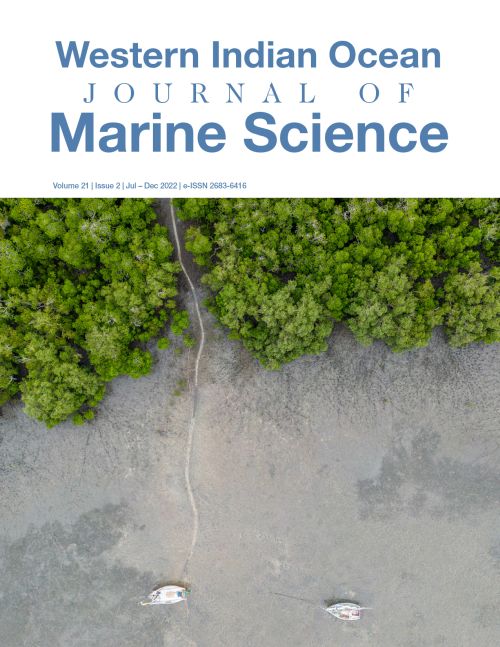Main Article Content
Caudal fin as a proxy for dorsal muscle for nutrient enrichment monitoring using stable isotope analysis: the case of Gerres filamentosus and G. oyena from mangrove creeks of Tanzania
Abstract
The use of fish dorsal muscles in stable isotope studies, which is an invasive method that results in fish deaths, limits their applicability for rare and endangered fish species, as well as when large sample sizes and replicates are required, prompting research into feasible non-lethal sampling methods. The possibility of employing fin clippings (a non invasive approach) was investigated as a proxy for dorsal muscle in nutrient pollution monitoring studies using two common mangrove fish species, namely Gerres filamentosus and G. oyena, which are known to spend their early life stages primarily within mangroves. The dorsal muscles and caudal fin tissues of fish from the mangrove creeks of Kunduchi and Mbegani, Tanzania, were examined for 13C and 15N signatures. Dorsal muscles from Kunduchi (mean SD: 13C = -16.8 ± 2.86, 15N = 9.34±1.15) were more enriched than from Mbegani (mean SD: 13C = -18.60 ± 2.11, 15N = 7.27±1.09), and this enrichment was consistent across the two studied species. Caudal fins indicated similar enrichment trends. Fin tissue stable isotope values explained between 62 % and 87 % of dorsal muscle 13C and between 89 % and 98 % of dorsal muscle 15N variability. These findings support the use of fin-clipping as a non-lethal proxy for stable isotope analysis of the studied species for nutrient enrichment, and additional research into non-lethal sampling methods is recommended.






